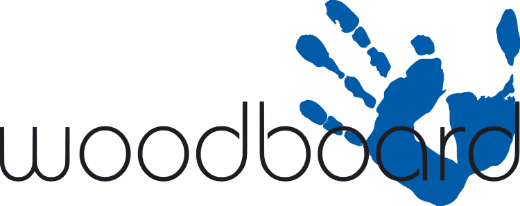Construction and materials
Every kiteboard should have a wooden core. There are so many advantages: Kiteboards with laminated wooden core are nicer to ride, can dampen vibrations, have a more defined feedback to impulses and are more durable than boards with a foam core. Manufacturers using wooden cores usually like to show them. The wood becomes a part of the design, so it is visible from the outside. Carbon boards are an exception: In this case, the carbon covers the wooden core. As carbon is not transparent, the wooden core is not visible anymore. In that case you have to be able to trust the specifications of the manufacturer.
Quality criteria of kiteboards
It is not possible to look inside a kiteboard. But it can be quite hard to determine the quality of a kiteboard just from the looking at the outside. Here is some information on how to still do it:
Core material
The core material should be wood. It is only visible, if it is integrated in the design process. Take care for a periodical replication of the texture. This could be a sign for printed wood optics instead of a real wooden core.
The wooden core can be colourful, from yellow to brown, while showing the unique impression of this material. If its colour shifts to blue, it is a sign for the so-called blue stain fungus, a mould, that can appear if the wood was stored in very humid places. It doesn’t just look bad; it also doesn’t work properly. Don´t use it!
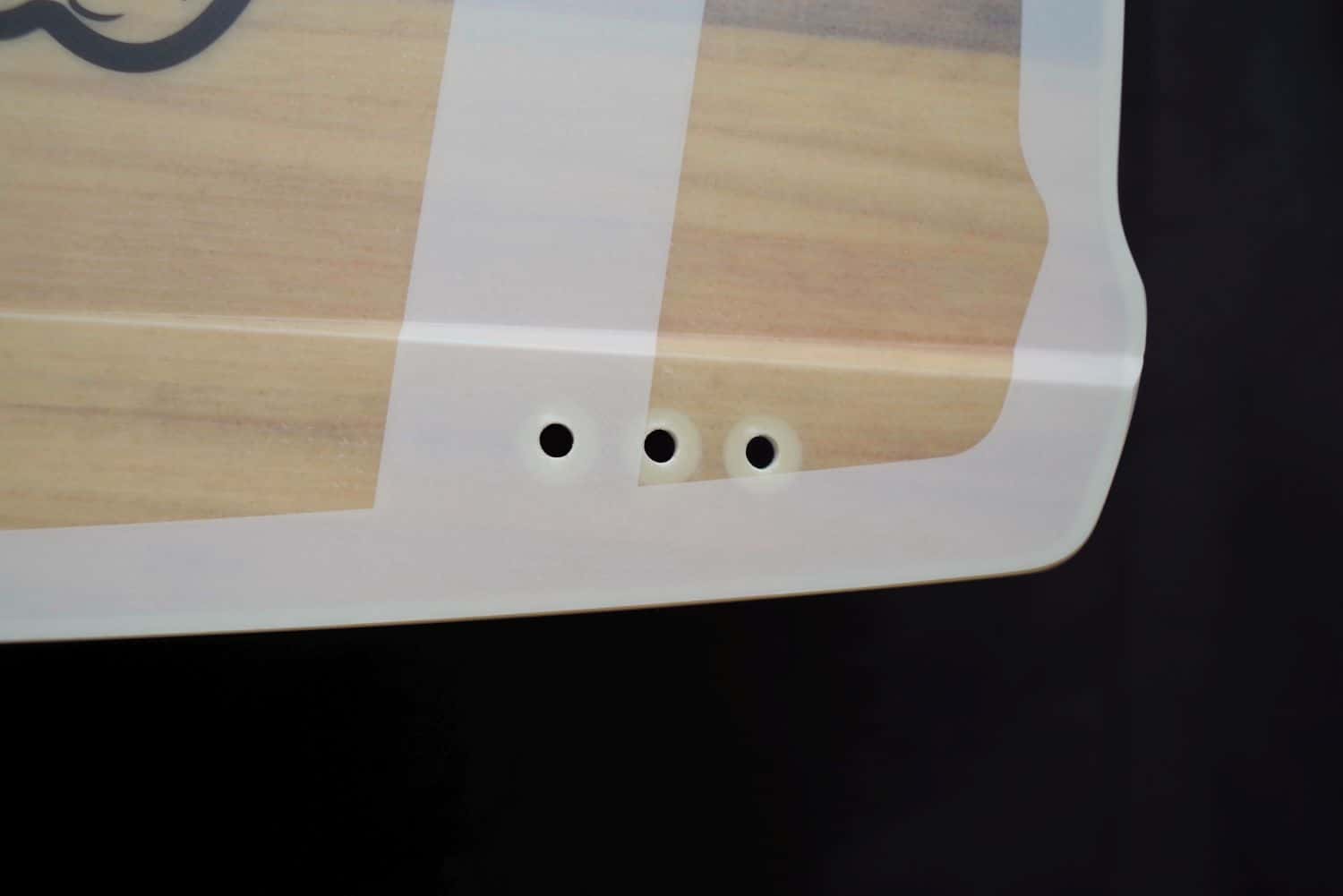
Pic: Example for perfect craftmanship
Sidewalls
The sidewall of a kiteboard is made from ABS (Acrylnitril-Butadien-Styrol). ABS is used all around the outline of the kiteboard to seal it to the inside. At one point there is a crack – that’s the beginning and the end.
This crack should not be wider than 0,1 mm and still be sealed with glue. If the crack is bigger, for example 1 mm, water can enter the inside of the kiteboard. This is a sign for low quality processing.
Also at the drill holes used for the fins there needs to be an ABS sealing.
Surfaces
All surfaces should be plain and even without any bumps or bubbles. Except for the intentionally placed channels, of course.
Serial number
Every board has a serial number. This number is a sign for quality awareness, as it offers the company the possibility to do proper quality management.

Gap width
There should be no, or at most a very small gap between the wooden core and ABS sidewalls. A small gap stands for precise work, similar like in the car industry. With a gap of just a tenth of a millimetre, the kiteboard is processed with high quality. If the gap is around one millimetre or bigger, that’s a sign for poor processing and high tolerance. Air pockets are very likely to appear. Under heat, those air pockets expand in a different way than the surrounding wooden core. On the long run, this can lead to damage.
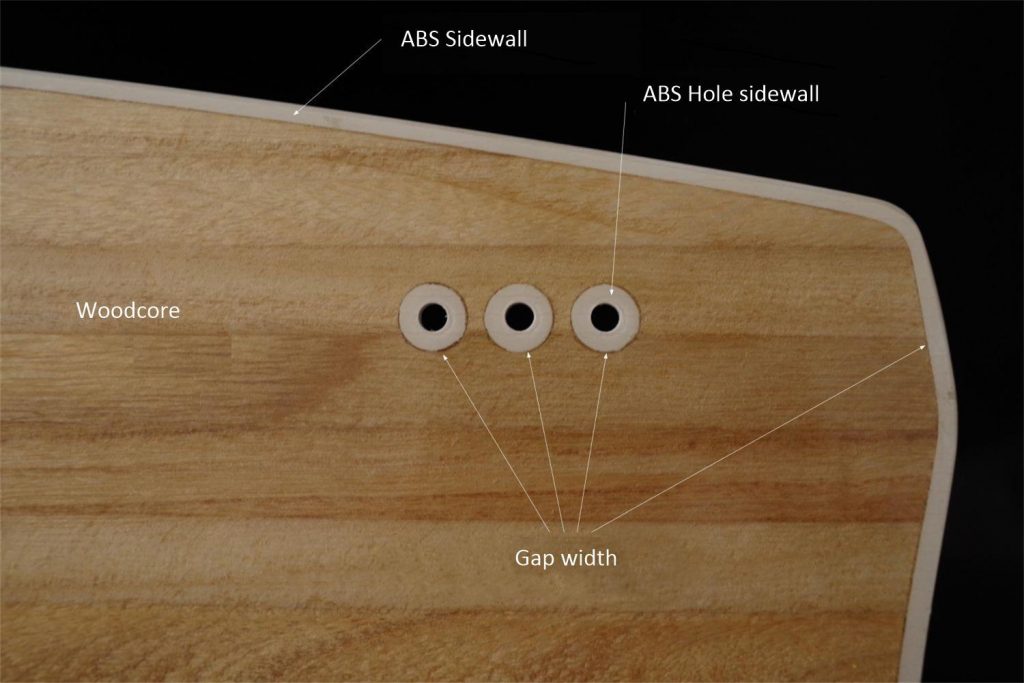
Symmetry
The kiteboard should not be twisted. You can control it easily: Put the kiteboard on the floor upside down, so the inserts are facing the bottom. Now you check, if all 4 tips are touching the ground. If that is not the case, the kiteboard is twisted and should not be bought.
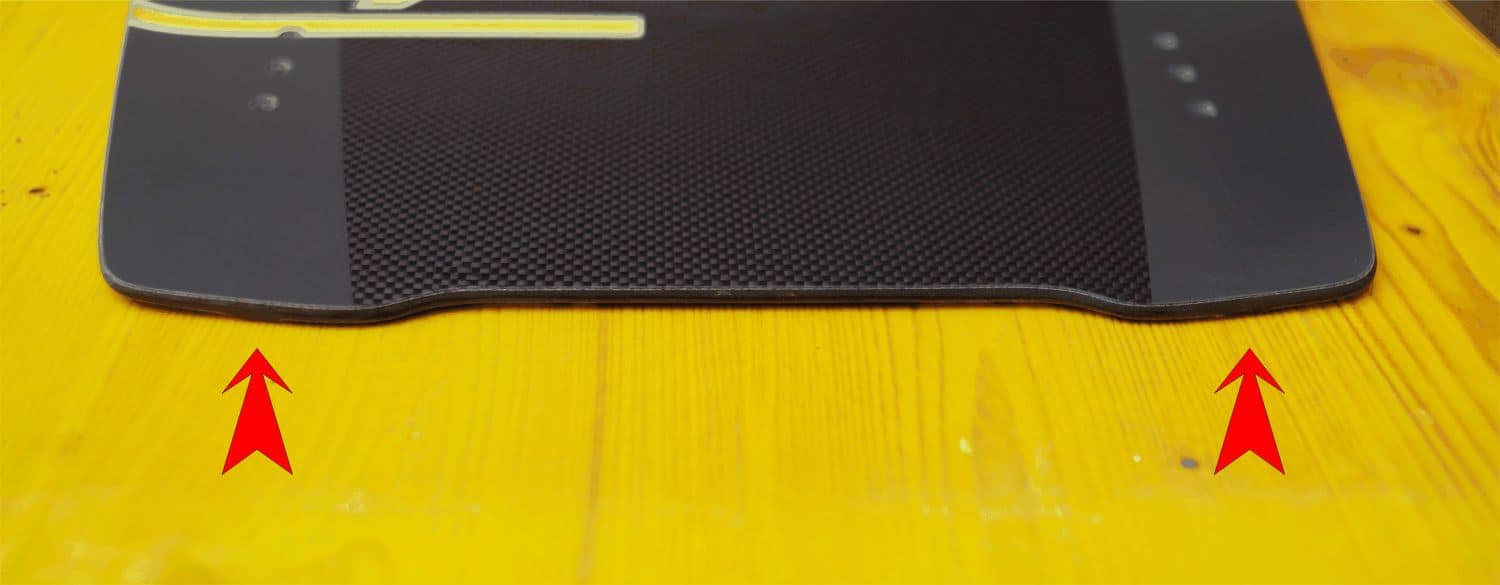
Glass fibre jacket and processing
One of the challenges for the manufacturer is to soak the glass fibre of the board properly with glue while avoiding areas with too much glue on it. Glass fibre which is not soaked enough with glue will become white. If you cannot see the texture of the glass fibre, this is a sign for too much glue on it.
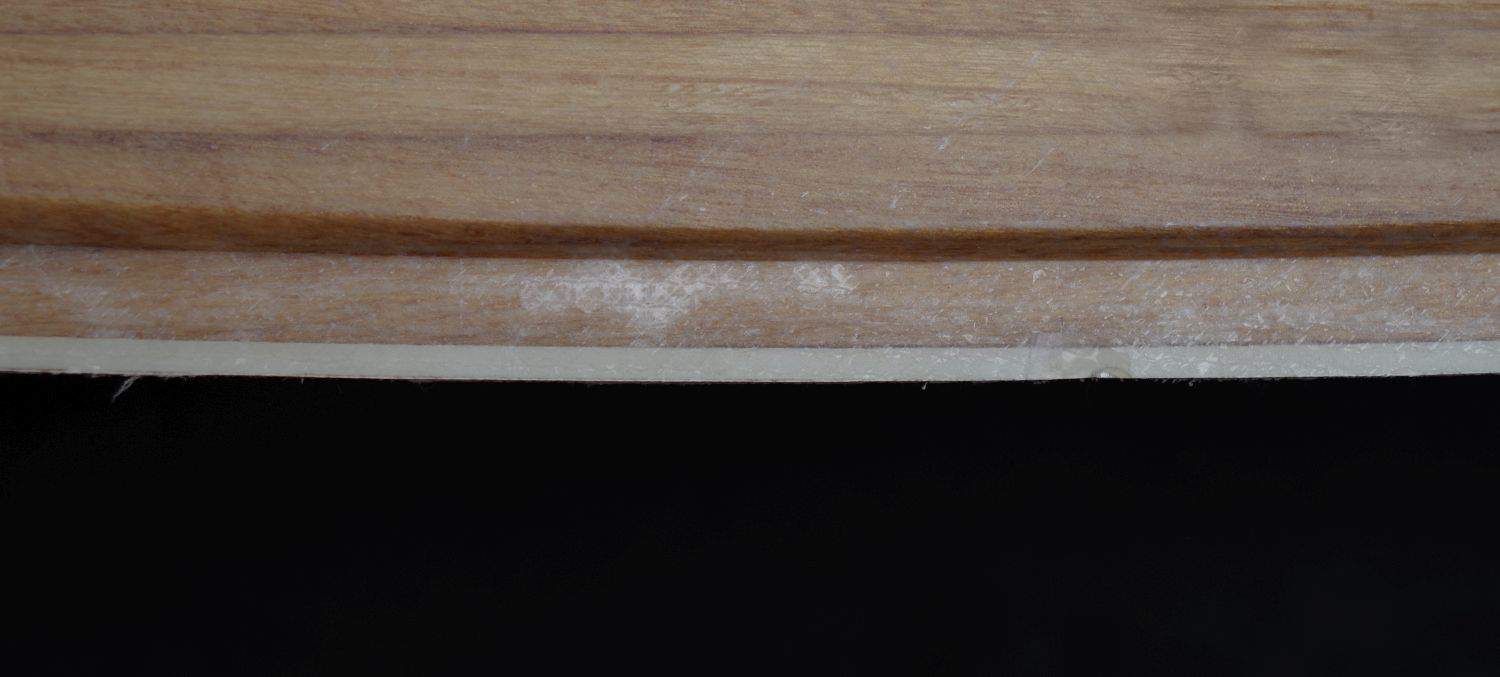
Pic: Example for very bad Quality
With graphics all over the kiteboard, it can be very hard to check this quality criteria. If a manufacturer avoids to put graphics on the entire kiteboard, they usually trust their own production and want to show the quality of the kiteboard. Every mistake is visible without graphics!
A lot of experience and a trusted process of manufacture is needed for success.
